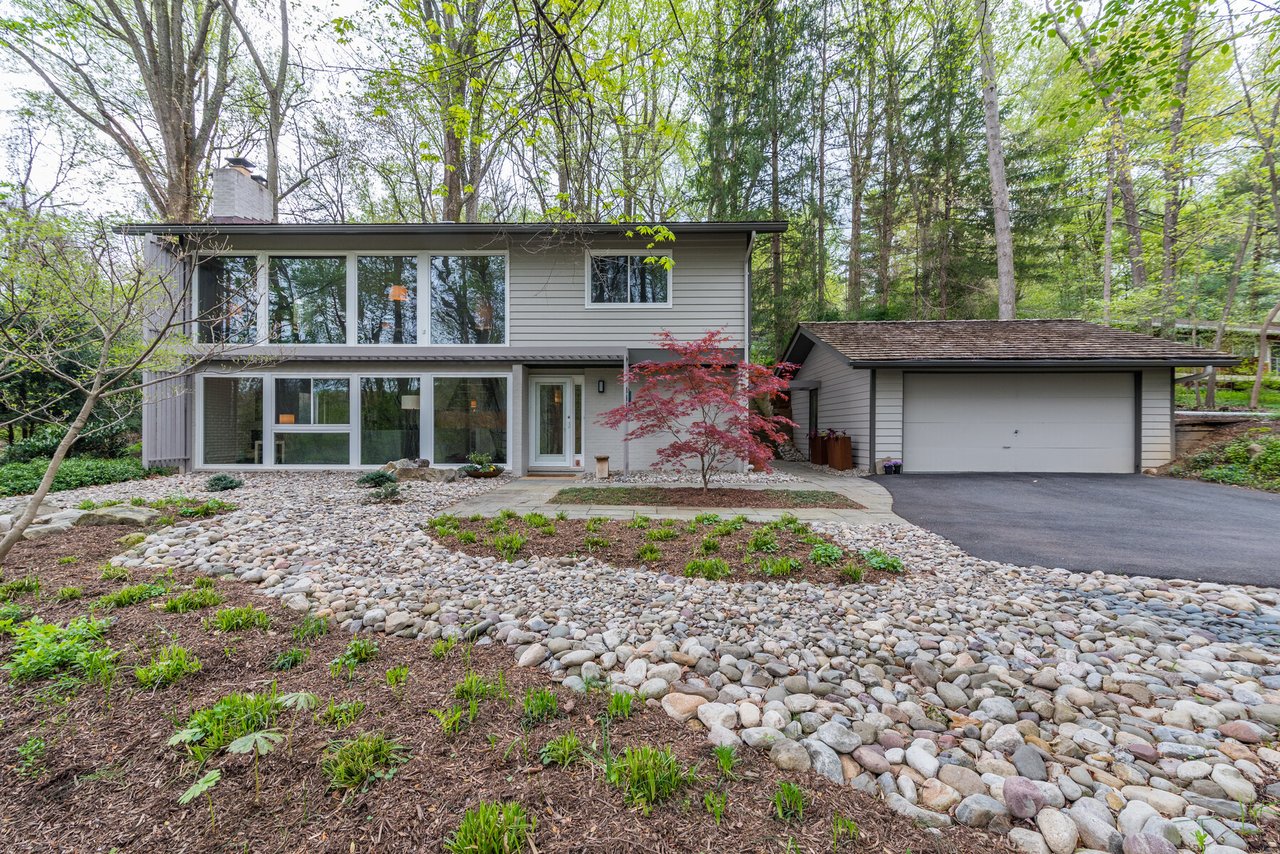Before considering the guidelines for protecting the status quo in Carderock Springs, let’s examine just what there is about it that we want to protect. Carderock Springs is a medium-sized community (405 houses) of medium-sized contemporary houses sited in rolling topography containing many indigenous trees. More than the houses themselves, it is the way the different models were designed to accommodate the various site conditions and the way the roads adapt to the site that makes Carderock Springs a unique community (the architect won several awards). It was this respect for the site requiring minimal grading that allowed most of the original topography, and so many of the native trees to be preserved.
For the most part, the houses are a pleasing combination of brick, wood siding, and glass areas covered by gently sloping shingled roofs with generous overhangs. It is this generous roof overhang (2 feet) with its sloping soffit (underside) and the angled fascia (edge) that gives a strong roof expression and (in my opinion) is probably the most distinctive architectural characteristic of Carderock Springs houses. The generous amount of glass in contemporary houses allowing sweeping views makes it paramount that those vistas be maintained and protected.
The covenants of our community are intended to ensure the best use and most appropriate development of each homesite, to prevent haphazard and inharmonious improvements, and to preserve and enhance the natural beauty of our neighborhood. To this end, Article VI excluding fencing from front yards protects the openness and sweeping flow of greenery from one site to another. But what does the Architectural Review Committee look for in reviewing drawings for an addition? The committee believes that the key word is “harmonious” which is mentioned several times in the covenants. So far as practicable, materials and colors in an addition should match existing ones. Furthermore, roof slopes and significant details such as the roof eave (overhang with sloping soffit) should be repeated in an addition. Also, an addition should require minimum disturbance of the site, and not entail significant earth relocation with large retaining walls and/or the removal of large numbers of .trees. Moreover, its placement should show consideration for the visual rights of its neighbors (this applies to all buildings including storage sheds). The committee does not feel that irregular, complex, or curvilinear-shaped additions are compatible with existing architecture nor are such elements as cupolas, window shutters, fancy wrought iron work, aluminum awnings, or box cornices.
In the last several years, significantly large additions have been added to about a half-dozen houses in a trend known as “mansion-sizing”. The community can only accommodate a certain number of these “mansions” before their character begins to deteriorate as we start to lose sight of the site. The committee is going to take a harder look at future large additions, and it is hoped that owners will show more restraint so that the pleasant green openness we enjoy now can be retained.


























